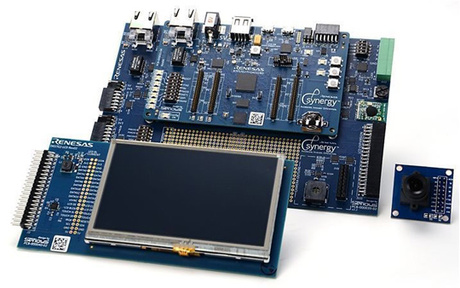Innovation, integration and the IoT — get ahead with Synergy

The Internet of Things is transforming the electronics industry. With internet access becoming a standard feature for more and more devices, not to mention the growing need for these devices to talk to other devices, companies are being pressured to become specialists in connectivity and everything that goes with it.
In response to this trend, semiconductor company Renesas Electronics has developed what it claims to be the world’s first integrated IoT platform — Renesas Synergy. The product has been rolling out across Asia since 20 July and held its Sydney launch on 29 August.
Ronnie Ho, director of marketing at Renesas Electronics, explained that some companies might have some great ideas and potential applications relating to the IoT, but not have the expertise to leverage them. This means they will need to build their product from the ground up, first designing suitable hardware, then software, then testing it all to make sure it works. Even those companies that do have such expertise often encounter obstacles that slow down their time to market.
Thus, after investing a substantial amount of time and money in R&D, training and maintenance, there are no resources left for companies to focus on making their products truly innovative. This is where Synergy comes in.
Synergy is a complete and qualified platform with fully integrated software, a scalable family of microcontrollers and unified development tools. Operating under the three core values of enabling faster time to market, reducing cost of ownership and reducing barriers to entry, the platform allows developers to start MCU software development immediately at the API level.

As explained by Peter Carbone, vice president and general manager of the Synergy IoT Platform Business Division, Synergy provides companies with a baseline they can build on — a bridge that they can cross. Instead of developing the basic infrastructure themselves, or putting together hardware and software components sourced from third parties, they can skip straight to making their product special; adding their own “secret sauce”, in the words of Carbone.
So how can one little platform account for dozens of potential applications across several industries? Carbone explained that Renesas has developed a core technology, based on its 30 years in the embedded industry, which can be adapted to many different applications.
“When we developed Synergy, we looked at five basic market segments: metering or energy management, factory automation, building automation, home automation and medical,” he said. “And then we looked at some of the core elements that are common across that.”
The platform has the flexibility to be modularised, so components can be brought in and out. The source code of the Synergy Software Package (SSP) is completely visible during development and debugging, and can be edited, saved and printed on purchase of a licence from Renesas. Verified and qualified software add-ons are also available from the company, while hardware add-ons for specific applications can be purchased from Renesas’s Independent Design Houses (IDHs) — a network of companies who have been trained in leveraging the platform quickly and efficiently.
Renesas has so far recruited 16 IDHs in South-East Asia, Oceania and India who will provide ongoing support to customers and have also developed their own prototypes using Synergy. For example, Queensland company IntelliDesign has created the Zephyr Air Quality Monitor, which provides real-time measurements and alerts on critical changes in air quality. Amatek Design, in NSW, utilised Synergy for a monochrome display as part of its rowing simulator. iWave Systems Technologies, in India, has developed a healthcare solution that measures vital data and then sends that data to the patient’s doctor via the cloud. And with more IDHs set to be announced in 2017, the variety of Synergy-based products will only continue to grow.

According to Carbone, Synergy is particularly suitable for the Australian market, where there are a lot of innovative start-up companies who unfortunately face some amount of risk when they go to launch a new product. He said the Synergy business model works as a stimulus for these companies, as it requires no upfront licences, maintenance or support fees — customers only start paying for the platform when they start shipping their product.
“When they make revenue, we make revenue,” he said.
Synergy is now available in Australia and New Zealand through electronics distributor Braemac.
Spinning, twisted light could power next-generation electronics
Researchers have created an organic semiconductor that forces electrons to move in a spiral...
Improving the way flash memory is made
Researchers are developing the ideal manufacturing process for a type of digital memory known as...
Optical memory unit boosts processing speed
Researchers have developed a fast, versatile volatile photonic memory that could enhance AI,...





